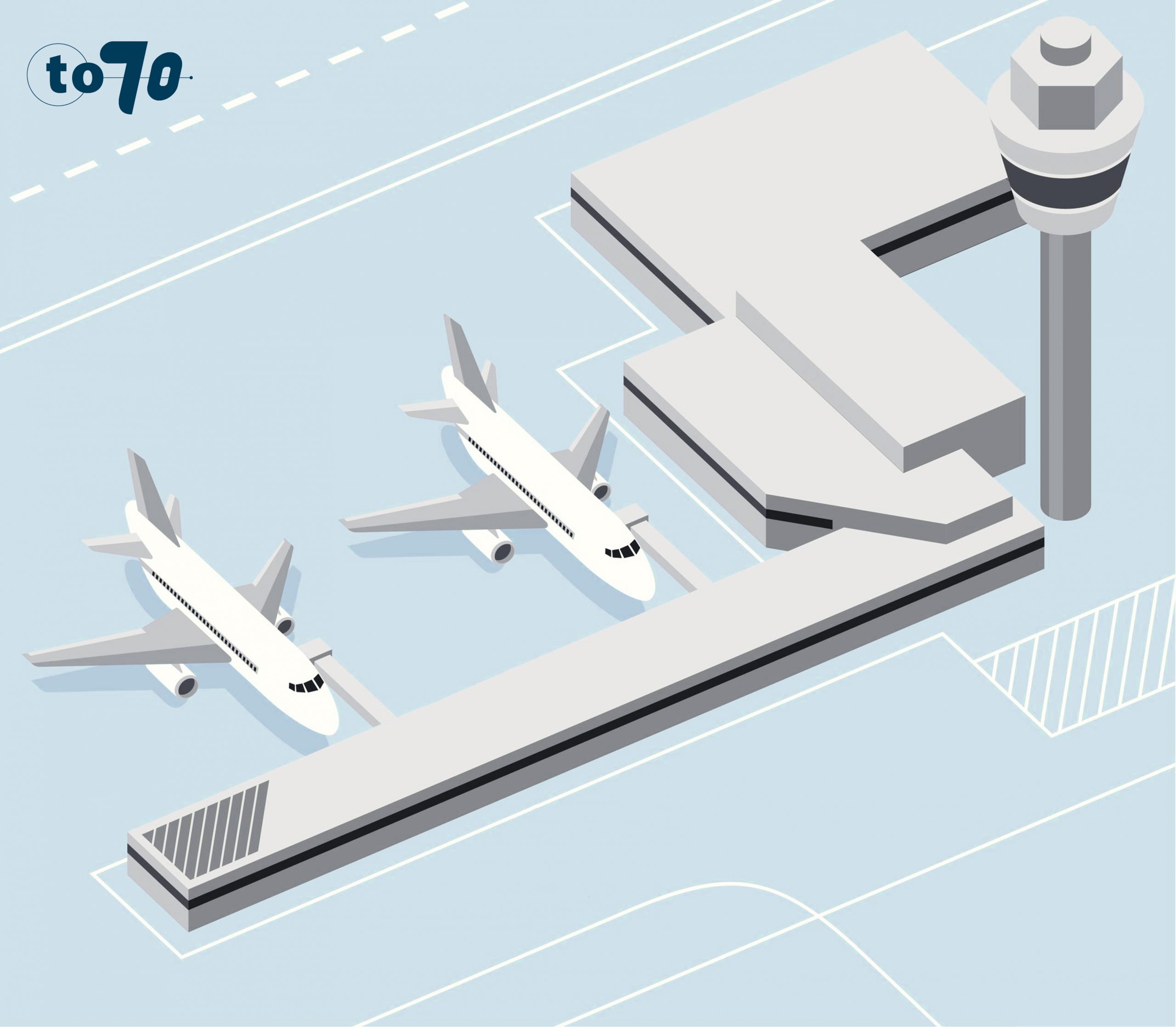Successful airport development extends beyond infrastructure construction; it involves fostering connectivity and prosperity both in the skies and on the ground. This core principle underscores the substantial impact of strategic, long-term planning on airport and aviation infrastructure. Master planning serves as the foundation of this process, shaping airports to be flexible, resilient, and sustainable entities for the future.
Within this context, the airport represents a highly complex system where its capacity and adaptation to demand growth must be planned with long-term perspectives, focusing on the Quality of capacity. Masterplans should be capable of enhancing the functionality levels of the airport and the services provided to passengers. Simultaneously, they should adhere to the ecological and environmental requirements of the surrounding area. That’s why To70 aims to address the broader question of how to enhance the Quality of the offered capacity, making it sustainable, more modular, and resilient to sudden changes.
Recent data from the International Civil Aviation Organization (ICAO) indicates a rapid expansion in air travel, reflecting increased flights and passengers worldwide. Despite challenges such as those posed by the Covid-19 pandemic and growing environmental concerns, demand for air travel remains strong. This underscores the importance of airports enhancing their quality of capacity to accommodate rising passenger numbers sustainably. It’s crucial for airports to adjust master plans accordingly, ensuring they can effectively manage increased volumes while prioritizing environmental, social, and economic sustainability.
What is Airport Master Planning?
Airport master planning, as described by the International Civil Aviation Organization (ICAO), involves the systematic and strategic process of analyzing current and future aviation demand, identifying infrastructure requirements, considering environmental and safety factors, and establishing long-term development strategies to guide the growth and development of an airport. This comprehensive approach encompasses key elements such as:- runways, – taxiways, – cargo facilities, – terminal buildings, – car parking areas, – aprons, – hangars, – fuel depots, – control tower and other essential infrastructure. At To70, we believe that a successful airport master plan should prioritize enhancing passenger experience, optimizing operational efficiency, and accommodating Growth in a flexible, resilient and Sustainable way.
Let’s now explore in detail each of these crucial elements that constitute a successful airport master plan.
A. Enhancing passenger experience
Developing an airport that prioritizes the passenger experience is crucial for effective airport master planning. It involves formulating a strategy rooted in a deep comprehension of customer desires, of passenger preferences to develop and refine profiles, and delving into their behaviors and patterns to create a highly personalized experience. The integration of technology plays a pivotal role in elevating operational efficiency, optimizing the passenger journey, and minimizing the necessity for additional infrastructure, enhancing the level of service across all subprocesses and guaranteeing a seamless journey.

B. Efficient operations
Strategic and efficient airport management guarantees flawless transitions and optimal performance at each phase.  Meticulously planned infrastructure, including runways, taxiways, and aprons, not only streamlines aircraft movements but also minimizes taxi times, elevating overall operational efficiency. Crucial to meeting both current and future demands, resource optimization and capacity planning are prioritized, featuring flexible layouts adaptable to diverse aircraft sizes. Resilience is inherent, with contingency plans and backup systems in place, ensuring uninterrupted operations even in the face of unexpected disruptions. Similarly, the landside infrastructure adheres to this concept to amplify the passenger experience as previously outlined.
Meticulously planned infrastructure, including runways, taxiways, and aprons, not only streamlines aircraft movements but also minimizes taxi times, elevating overall operational efficiency. Crucial to meeting both current and future demands, resource optimization and capacity planning are prioritized, featuring flexible layouts adaptable to diverse aircraft sizes. Resilience is inherent, with contingency plans and backup systems in place, ensuring uninterrupted operations even in the face of unexpected disruptions. Similarly, the landside infrastructure adheres to this concept to amplify the passenger experience as previously outlined.
C. Accommodating Growth in a flexible, resilient, and Sustainable way
To envision a dynamic airport landscape teeming with activity, it is essential to devise a masterplan that can adapt flexibly to rapid aviation growth while remaining resilient to downsizing due to disruptions and climate risks. This demands meticulous foresight and strategic planning, starting with an analysis of current and projected air travel demands against existing infrastructure capacity. Comprehensive demand forecasting scrutinizes historical data to discern emerging trends. Infrastructure planning orchestrates phased expansion strategies to optimize airport capacity and operational efficiency, emphasizing flexibility and modularity in design for seamless adaptation over time. Terminal layouts and gate configurations are engineered for versatility, while runway and taxiway designs ensure scalability to manage heightened air traffic with minimal environmental impact and cost. All of this is carried out with a keen focus on the quality of capacity, ensuring that the airport grows sustainably over time.
Steps for an Airport Master Planning
Airport master planning is a comprehensive process that guides the growth and development of an airport, ensuring its long-term sustainability and effectiveness. At To70 airport master planning process is divided into three distinct phases: developing understanding, exploring solutions, and implementation. Within each phase, thorough analysis, collaborative project meetings, and the creation of essential work products by the project team are crucial. Moreover, a critical aspect of each phase is the incorporation of feedback loops, allowing for adjustments and refinements to the work based on stakeholder input and changing circumstances.


ABOUT THE AUTHOR
Joined To70 Italia in 2023 as an Aviation Architecture Consultant, with a master’s degree in building and architectural engineering. She excels in two key roles: airport master planning and pioneering sustainable solutions for airports. Passionate about driving aviation towards a greener future, she is involved in projects that integrate sustainability into airport operations and development.
Check out our open vacancies around the globe!

